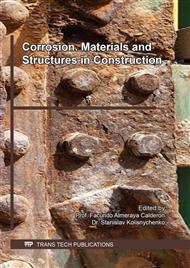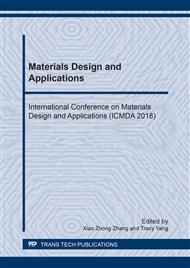p.69
p.77
p.83
p.89
p.97
p.107
p.115
p.123
p.129
Review on Design Consideration and Code Provisions on Corrosion Resistant Reinforcing Bars
Abstract:
Premature deterioration of reinforced concrete structures due to corrosion of the reinforcing steel is a major concern worldwide. In this study code provisions and design considerations for using corrosion resistant reinforcing steel bars have been discussed at length. The most common corrosion resistant reinforcing bars available today are– Fusion Bonded Epoxy Coated Bars (ASTM A775), Hot Dip Galvanized Steel Bar (ASTMA767), Glass Fiber Reinforced ,Polymer Bars and Stainless Steel Rebars (ASTM A955). Especially in marine environments corrosion of reinforcement is one the major concerns regarding durability of RC Structures. Also parts of any structure that are subjected to intermittent wetting and drying (e.g. bridge piers) and those that are subjected to dampness (e.g. topmost roof slab of a building) are more susceptible to corrosion. It is well known that Bangladesh’s already struggling infrastructure is under a constant threat of deterioration due to various physical and environmental conditions while a huge shortfall in budget exists to ensure periodic maintenance and repair works. Corrosion resistant rebars are globally accepted corrosion resistant system that will ensure the structures can be used till the end of their design lives. While demand for all non-corroding bars is on the rise, expertise of engineers and construction workers in handling these bars should grow as well. Therefore recommended work practices while manufacturing, fabricating and concreting has to be included in the country’s standards and guidelines.
Info:
Periodical:
Pages:
115-120
Citation:
Online since:
October 2018
Authors:
Keywords:
Price:
Сopyright:
© 2018 Trans Tech Publications Ltd. All Rights Reserved
Share:
Citation:



